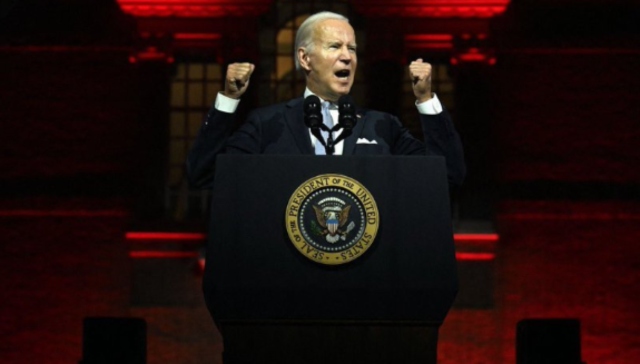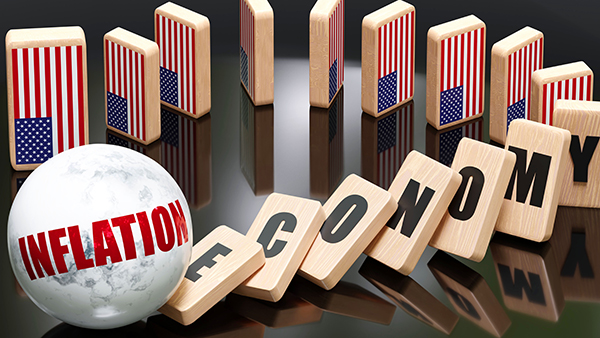Europe’s energy crisis explained
09/25/2022 / By News Editors

- In response to Russia severely restricting or cutting off gas supplies, EU governments will take dramatic actions over the coming months. Germany recently announced it would keep two of the nuclear plants it was shuttering as backups, just in case. EU leaders will then go back to the voters and describe the amazing job they did while failing to mention they were the ones who made the decisions that put their countries in this crisis in the first place.
- The entire current crisis was avoidable if the EU had developed a rational plan instead of one based on a daydream, no matter how enticing.
- The U.S. needs urgently to examine what is happening in Europe and develop a rational energy transition plan. Any long-term solution must include strategies for reliable power production, affordable sustainable energy and a massively strengthened electrical grid.
- Europe’s plan was built on the hope that consumers would accept higher prices, that Russia and Putin would be reliable, and that battery storage technology would be robust enough to cover the times when “the wind doesn’t blow and the sun doesn’t shine.”
- This strategy, sadly always doomed to failure, provides a cautionary tale for “solutions” based solely on hope.
- The U.S. should not repeat the same mistakes as the EU by continuing down a path that cuts domestic fossil fuel production, bans gasoline-powered vehicles, and ignores that the power generation capacity and energy infrastructure are not in place to achieve an unrealistic and unfortunately unsustainable green agenda.
(Article by Pete Hoekstra republished from GatesOneInstitute.org)

In response to Russia severely restricting or cutting off gas supplies, EU governments will take dramatic actions over the coming months. Germany recently announced it would keep two of the nuclear plants it was shuttering as backups, just in case. Pictured: The Neckarwestheim nuclear power plant, one of two that the German government plans to allow to continue running as a backup. (Photo by Thomas Niedermueller/Getty Images)
Europe is facing a growing energy crisis. Individuals and industries are being battered by rising energy costs. On August 31, Russia shut down the Nord Stream 1 gas pipeline to Germany for initially what was supposed to be 72 hours, but followed by an announcement of “technical difficulties” that would prevent a resumption. Russian energy giant Gazprom also announced that natural gas supplies to French energy company Engie SA would be immediately reduced. These actions have created significant uncertainty and the threat of much higher energy prices in Europe as the cold winter season approaches.
In the Netherlands last month, I had the opportunity to discuss the skyrocketing energy costs. Monthly utility bills of 400 to 600 euros are not unusual. One company said it was spending four times the amount for natural gas than a year ago. The company indicated because of these higher costs, it would be cutting its production by 50% this winter. Most European Union countries are experiencing an eight-fold increase in energy prices.
Both Germany and the Netherlands have been seeing extreme energy price spikes. Germany’s prices surged to 1,050 euros per megawatt hour (MWh) before falling to 610 euros in August. Last year, the approximate cost was only 85 euros per MWh.
This dramatic inflation in energy costs is resulting in predictable actions with unpredictable outcomes. The Dutch have reported demand destruction. This means that when the price for a product increases, the demand for it decreases. What we are seeing in Europe is significant decrease in demand for energy because of the huge price increases. An example is the business that will cut production by 50% because energy costs have significantly increased the costs of their end product, resulting in a 50% cut in demand for their product.
The Dutch used 25% less natural gas in the first six months of 2022 than they did in the comparable period in 2021 — primarily due to customers’ responses to the higher prices and mercifully somewhat milder than expected temperatures.
The EU has already asked member states to cut energy use by 15% this winter. When it comes to Russian gas supplies, European Commission President Ursula von der Leyen warned Europe to prepare for the “worst situation.” Meanwhile, the Norwegian energy company Equinor estimates that European power companies will need to find 1.5 trillion euros to cover the costs of margin calls related to soaring energy prices. Europe and the West look as if they will be in for a rough, expensive winter.
Predictably, EU government leaders believe that the EU and its member states “must act.” Several countries have already unilaterally implemented measures — from imposing price caps to direct government handouts to deal with the immediate costs of the crisis. At the EU level, there now appears to be a consensus that the entire energy market structure must be redesigned, and quickly. They seem to be hoping that this might be completed by early 2023, but none of these actions is laying the foundation for a long-term, workable energy solution.
The reality, however, is that this situation did not develop overnight and will not be fixed overnight. Despite European politicians blaming all this on Russian President Vladimir Putin and Russia’s invasion of Ukraine, the root causes go deeper. The EU made a commitment to sustainability and so-called green energy years ago. Germany, Austria, Italy and the Netherlands are now reportedly going back to coal-fired plants to save on natural gas usage. Experts in Germany say the coalition government is “trying to buy time with coal so that it can come up with a more sustainable long-term solution.”
In January, Germany closed half of its six remaining nuclear power plants despite rising energy costs. Germany’s lofty sustainable climate goals did not include plans on how to replace the energy that was being provided by its safe, clean and reliable nuclear power plants.
Instead, to achieve its climate utopia, Germany decided that it would become more dependent on Russian gas, that consumers willingly would pay higher prices, and that it could turn to power from far less reliable wind and solar energy. This fantasy became the model across the EU, and the EU has no one else to blame for the results.
The frustrating outcome is that businesses, families and individuals will be forced to shoulder the burden caused by unwise policy decisions by their leaders. As one Dutch farmer said, their governments are run by a bunch of bureaucrats who sit in chairs and have no real-world experience. It might be worth adding they also have no accountability.
In response to Russia severely restricting or cutting off gas supplies, EU governments will take dramatic actions over the coming months. Germany recently announced it would keep two of the nuclear plants it was shuttering as backups, just in case. EU leaders will then go back to the voters and describe the amazing job they did while failing to mention they were the ones who made the decisions that put their countries in this crisis in the first place.
The entire current crisis was avoidable if the EU had developed a rational plan instead of one based on a daydream, no matter how enticing.
The U.S. needs urgently to examine what is happening in Europe and develop a rational energy transition plan. Any long-term solution must include strategies for reliable power production, sustainable energy and a massively strengthened electrical grid.
Europe’s plan was built on the hope that consumers would accept higher prices, that Russia and Putin would be reliable, and that battery storage technology would be robust enough to cover the times when “the wind doesn’t blow and the sun doesn’t shine.”
This strategy, sadly always doomed to failure, provides a cautionary tale for “solutions” based solely on hope.
The U.S. should not repeat the same mistakes as the EU by continuing down a path that cuts domestic fossil fuel production, bans gasoline-powered vehicles, and ignores that the power generation capacity and energy infrastructure are not in place to achieve an unrealistic and unfortunately unsustainable green agenda.
Read more at: GatesOneInstitute.org
Submit a correction >>
Tagged Under:
chaos, Collapse, crisis, economy, electricity, energy, Europe, government, natural gas, power grid, Russia
This article may contain statements that reflect the opinion of the author
RECENT NEWS & ARTICLES
COPYRIGHT © 2017 COLLAPSE.NEWS
All content posted on this site is protected under Free Speech. Collapse.news is not responsible for content written by contributing authors. The information on this site is provided for educational and entertainment purposes only. It is not intended as a substitute for professional advice of any kind. Collapse.news assumes no responsibility for the use or misuse of this material. All trademarks, registered trademarks and service marks mentioned on this site are the property of their respective owners.




















